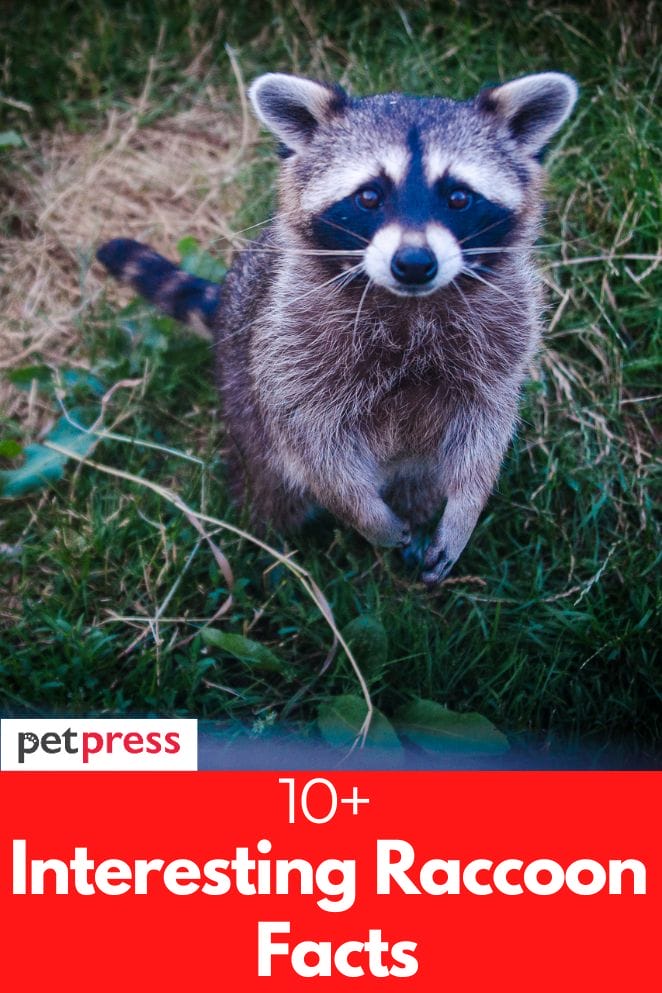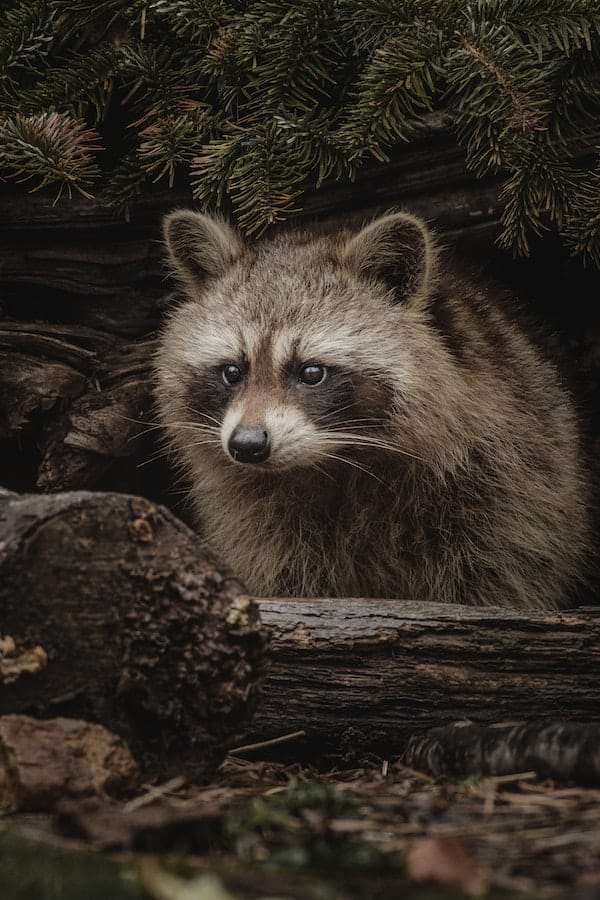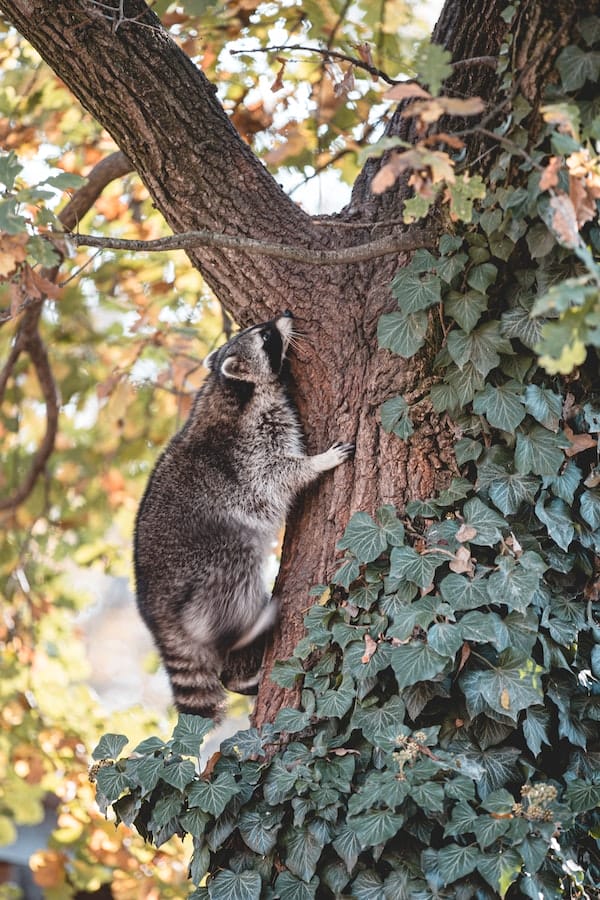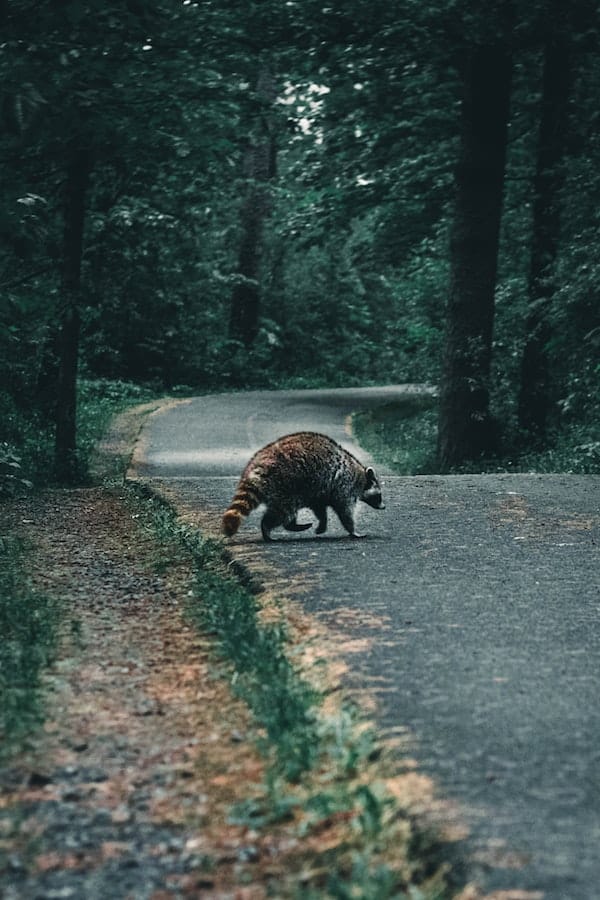
Raccoons are fascinating creatures that are known for their distinct markings, intelligence, and curious nature.
They can be found throughout North America, living in a wide range of habitats, including forests, prairies, mountains, and even cities.
Whether you observe them from afar or get up close and personal with one of these intriguing animals, there are many interesting facts about raccoons that are sure to capture your interest.
Fact #1: Raccoons are nocturnal animals.
Raccoons are well known for their nocturnal behavior, meaning that they are most active at night and spend the day sleeping.
This helps them to avoid predators who may be hunting during the day, as well as taking advantage of nighttime when food sources such as insects and small mammals are more available.
Because of their nocturnal habits, raccoons are often active and foraging for food in the darkness of night, using their keen senses of sight and smell to find food and avoid danger.
Fact #2: Raccoons are excellent swimmers.
Raccoons are excellent swimmers, utilizing their long, thick fur and webbed feet to move through the water with ease.
They are often found foraging along rivers and other bodies of water, where they can hunt for fish, crustaceans, and other aquatic prey.
Additionally, raccoons will occasionally take a dip in water to cool off or escape from predators. Their natural agility, strength, and swimming abilities make them formidable opponents in the water.
Fact #3: Raccoons have very good eyesight.

Raccoons have very good eyesight, which allows them to see clearly, even in low-light conditions and at long distances.
They are capable of detecting even the slightest movements or changes in their environment, allowing them to quickly locate sources of food and potential threats.
Their large, forward-facing eyes also give them excellent depth perception, which is particularly useful when foraging or navigating through tight spaces.
Fact #4: Raccoons have a very good sense of touch.
Raccoons have an extremely sensitive sense of touch, which allows them to navigate their environment and forage effectively.
Their large, highly developed paws are covered in thick fur and equipped with long, dexterous claws that allow them to feel even the smallest changes in texture or surface irregularities.
This enables raccoons to locate food items buried under leaves or grass, climb over rocks and branches, and forage in tight spaces without difficulty.
Fact #5: Raccoons are omnivores.
Raccoons are omnivores, meaning that they eat both plant-based and animal-based foods.
They tend to forage for insects, small mammals, fruits, nuts, and other food items depending on their location and the season.
In addition to these natural sources of nutrition, raccoons will also eat carrion or other food waste that they find in urban areas and have even been known to raid garbage cans and dumpsters for human food.
Fact #6: The average lifespan of a raccoon in captivity is about 20 years.
The average lifespan of a raccoon in captivity is about 20 years, making them one of the longest-lived mammals in North America.
This is due to a number of factors, including better access to food and veterinary care, as well as less exposure to environmental hazards like predators or harsh weather conditions.
Despite these advantages, raccoons in captivity are still at risk of developing certain health problems or injuries, which can shorten their lifespan.
- Related post: How To Name Your Pet Raccoon
- Related post: Famous Raccoon Names
Fact #7: Raccoons are native to North and Central America.

Raccoons are native to North and Central America, where they have evolved over millions of years to become one of the region’s most prevalent species.
These animals are well adapted to their natural environment, with strong bodies, keen senses, and agile movements that allow them to thrive in a variety of habitats.
Due to their widespread distribution across this vast region, raccoons are found in a variety of different habitats, including forests, grasslands, mountains, and urban areas.
Fact #8: There are 7 different species of the raccoon.
There are seven different species of raccoon, each of which is adapted to a specific habitat and has unique physical and behavioral characteristics.
These include the crab-eating raccoon, found in tropical forests throughout Central and South America; the common raccoon, native to North America; and the speckled racerunner, which is only found in the desert regions of Mexico.
Fact #9: The largest species of the raccoon is the giant raccoon, which can weigh up to 24 kg (53 lb).
The largest species of the raccoon is the giant raccoon, which can weigh up to 24 kg (53 lb).
This large and powerful animal is found in a variety of habitats across North and Central America, including forests, grasslands, and urban areas.
Despite their size, giant raccoons are agile and highly adaptable animals that have evolved over millions of years to become one of the region’s most dominant species.
Fact #10: The smallest species of raccoon is the pygmy raccoon, which only weighs 1 kg (2 lb).
The pygmy raccoon is one of the smallest species of raccoon, weighing just 1 kg (2 lb) on average.
This tiny animal is native to Central America, where it lives in a variety of habitats, including forests, grasslands, and urban areas.
Despite its small size, the pygmy raccoon is an agile and adaptable creature with strong senses and powerful movements that allow it to thrive in its natural environment.
Fact #11: Raccoons have 5 toes on each foot.

Raccoons have five toes on each foot, which allow them to move quickly and easily over a variety of different surfaces.
These agile creatures are highly adapted for life in the wild, with sturdy bodies, keen senses, and dexterous paws that help them navigate their environment with ease.
Because raccoons have such flexible feet, they are able to move easily through forests, grasslands, mountains, and urban areas alike.
Fact #12: Raccoons are known to be very curious animals.
Raccoons are well known for their curious and playful nature, often lingering near new or unfamiliar objects to investigate them further.
This innate curiosity makes them a frequent sight in urban areas, where they will explore trash cans and dumpsters, climb on rooftops, or interact with passersby in other ways.
Despite their reputation as mischievous creatures, however, raccoons are actually quite intelligent and have evolved over millions of years to become highly adaptable animals.
Overall, raccoons are fascinating animals that have evolved over millions of years to become one of North and Central America’s most successful species.
Despite their reputation as mischievous creatures, raccoons are intelligent and curious animals that continue to fascinate humans with their unique behaviors and adaptability.


GIPHY App Key not set. Please check settings